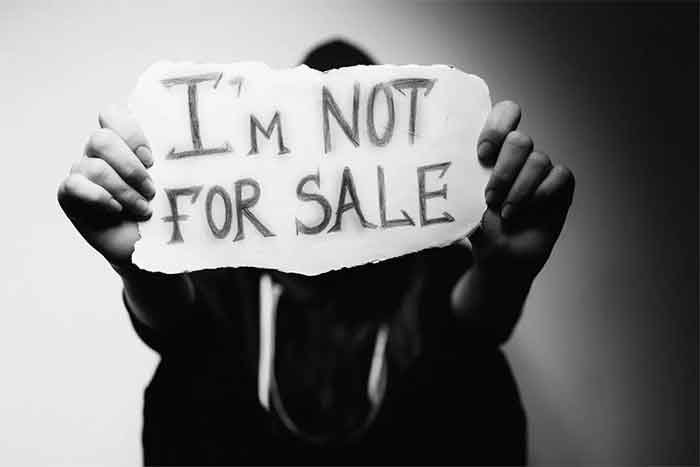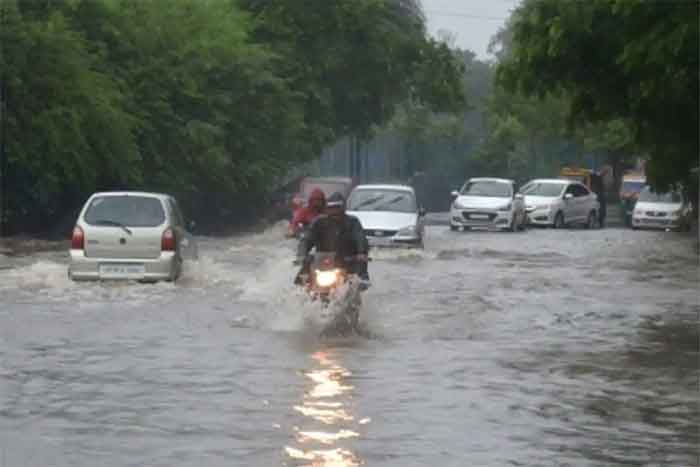
The world may have come to a standstill due to the Covid epidemic, but it turns out human trafficking smugglers never stopped their work. They continued to prey on children and women.
Yes, when Corona was at its peak, the smugglers slowed down for a while, as they were also afraid of getting infected. Now that the impact of the epidemic has reduced to a great extent, human traffickers have become active once again.
In the July 2022 report of the Railway Protection Force or ‘RPF’, it is mentioned that 47 such smugglers have been caught and 183 minors and 3 women have been freed from their possession. A month-long special drive against Human Trafficking through rail was launched in the month of July 2022. The RPF is part of the Railways and works under the Railway Board.
 The Indian railways has been the easiest medium for human trafficking among different means of public transport. The Railways, which operate about 21,000 trains across the country daily, is the most reliable mode of transportation for the traffickers who often moved their victims on long-distance trains. While the spot investigations of roadways transport by police has become a headache for the smugglers, human trafficking is not possible by air travel either and is quite risky.
The Indian railways has been the easiest medium for human trafficking among different means of public transport. The Railways, which operate about 21,000 trains across the country daily, is the most reliable mode of transportation for the traffickers who often moved their victims on long-distance trains. While the spot investigations of roadways transport by police has become a headache for the smugglers, human trafficking is not possible by air travel either and is quite risky.
In the last five years from 2017 to 2021 including the period of Covid epidemic, 2,178 people were smuggled through the train network. They have all been freed and most of them were children and women. As part of the anti-trafficking operations an additional 65,000 children, women and men have been relocated from trains, railway station premises and their surrounding areas.
Rama Singh Kakodia, a social affairs expert, explains that human trafficking is mainly for sexual exploitation, prostitution, forced labor, forced marriage, domestic forced labor, adoption, begging, theft of human organs or use as couriers for drug trafficking. Traffickers typically target children and women.
It is estimated that 45 to 50 percent of children who are victims of human trafficking are sexually abused. Some of these are pushed into prostitution. Around 4 to 6 percent use children in criminal activities. One to one and a half percent of children are forced to beg. Half to one percent of girls are forcibly married. The claim of the organs of surviving children being removed and sold has also been made in many reports related to human trafficking.
The RPF report said that using its outreach across the country and accelerating the efforts of the Anti-Human Trafficking Units (AHTUs) and other units of the police, the RPF recently launched “Operation Aahat” against human trafficking. As part of this initiative, RPF has recently set up 750 AHTUs across the country, which will coordinate with the police,
AHTUs are functioning in police stations, at district and state levels, intelligence units, NGOs and other stakeholders. Effective action is being taken against human trafficking through trains. RPF has signed an MoU with an NGO named Association of Voluntary Action (AVA). This organization is also known as Bachpan Bachao Andolan. This organization is going to train the RPF and other railway staff on all child protection issues and in implementation of sensitization and awareness campaigns. Also, AVA shares intelligence information pertaining to suspected traffickers and their activities with RPF to conduct raids and help in rescue of trafficked children.
Experts believe that poverty, hunger and unemployment are largely responsible for human trafficking. Especially those sections of society, which is not able to arrange two meals a day or is not educated, easily fall into the clutches of these smugglers.
In the annual report released in the first quarter of 2022 of the US government, India has been placed in the Tier-2 category for cases of human trafficking. This is the category in which countries are placed which are not able to strictly follow the standards set to prevent human trafficking.
According to the United Nations Office on Drugs and Crime Report of 2020, 135 countries around the world, including India, have very high rates of human trafficking. A study of the data has shown that 40 to 45 percent of the total cases are related to trafficking of women.
In India, anti-human trafficking units are working in more than 330 districts in all the states including MP, in close coordination with the Union Ministry of Home Affairs, Union Ministry of Women and Child Development, Union Ministry of Labor and Employment and the Union Ministry of External Affairs. These units were formed in the year 2020 when the central government allocated a budget of Rs. 100 crore for them.
Answering a question in the Indian Parliament in December 2021 it was claimed that in 5 years there has been a decrease in the cases of human trafficking in the country. There were 8,132 human trafficking cases in 2016, which decreased to 1,714 in 2020. At the same time, the conviction rate in human trafficking cases was 27.8 percent in 2016, which decreased to 10.6 percent in 2020.
Pooja Yadav is a journalist based in Bhopal, M.P.













































